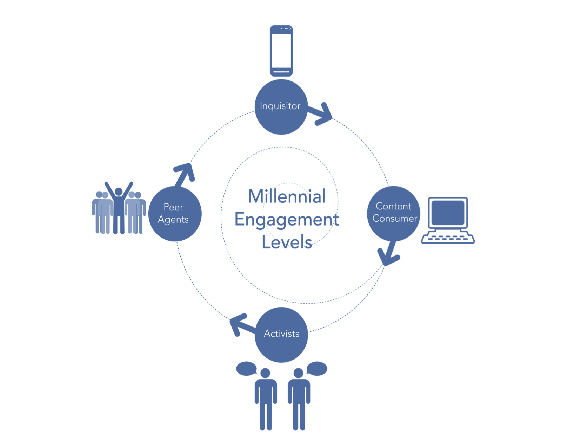 While members of the Millennial Generation, now the largest generation in our nation’s history, are widely known for a desire to give back to their communities or be part of large social change movements – the way Millennials define their engagement tends to be very different from the way organizations do.
While members of the Millennial Generation, now the largest generation in our nation’s history, are widely known for a desire to give back to their communities or be part of large social change movements – the way Millennials define their engagement tends to be very different from the way organizations do.
When you ask a Millennial, “Do you support a nonprofit or social cause?” The resounding answer is, “Yes!” When you follow that up by asking, “How do you support that organization?” You’re likely to hear answers like, I signed a petition, changed my avatar on Twitter, or liked them on Facebook.
Now, ask an organization if Millennials are supporting their cause, and they say, “No, we just can’t figure out how to reach them.” There in lies the disconnect between Millennials who believe they are supporting activism versus what organizations see as truly engaged participation.
With that in mind, organizations must embrace the notion that how they define engagement will be different. A one-size-fits-all approach is nearly impossible and will only meet the needs of a small segment of your audience – typically the super-engaged Millennials.
So, how do we convert a new generation of organizational champions into loyal and passionate advocates and donors? And how can we best position organizations so they are able to capture the limited time, dollars and attention spans of a generation always on the go? We’ll be the first to say, there’s no silver bullet. But there are a few concepts that we introduce in Cause for Change: The Why and How of Nonprofit Millennial Engagement that we hope will help your organization navigate this ever-changing space.
In Cause for Change, we introduce the Virtuous Cycle of Engagement as the core to building an organization’s Millennial engagement strategy. Here’s what the Cycle looks like – starting with the inquisitive and conscious consumer and moving toward deeper engagement as activists and ultimately true influencers or peer agents.

Engagement Level 1: Millennial Inquisitor
At this level, Millennials may be exposed to a communication message directly from the organization, through the media, or most likely through a friend or peer. Regardless of how they receive a message, the goal of the organization is to get those of the generation to learn more about the cause. Capitalize on the impulsive nature of MIllennials by making this easy. Spend time to simplify your messages, and create clear and present calls to action.
Engagement Level 2: Millennial Content Consumer
At this level, Millennials have moved beyond general interest to content consumption. They’re interested enough to poke around on your site and now they crave a few key things: information, knowledge, and expertise. Once on the website, the individual has a natural tendency to seek out the “About Us” section in an attempt to learn about the mission, people, and establishment of the organization. But above all, Millennials are trying to find an opportunity -- to volunteer, attend an event, or seek an active role as a leader. Dynamic content will determine whether or not they move to deeper levels of engagement. This critical point is also where the biggest drop-off in the cycle occurs if Millennials fail to see the ways to involve themselves.
Engagement Level 3: Millennial Activist
At this stage, an individual has gone through the discovery phase and engaged with an organization’s content to find an active role that resonates with them and their personal goals for engagement. Now it’s time for them to start taking action. We typically see four major roles of activism: cause champion, volunteer, content creator, or financial supporter.
Engagement Level 4: Millennial Peer Agents/Influencers
Finally, the smallest but most committed group are those who care enough to actively seek the involvement of their peers. They tell their friends and family about an organization and tend to be more persuasive with their efforts. They focus on how each individual within their closest networks can really get involved and be an active agent in the organization. From asking peers for money, to getting volunteers or petition signers, this form of influence is genuine and intentional. Furthermore, it’s a unique opportunity for organizations to interact directly with Millennials and bring them even closer to the organization.
At each level of engagement, as you increase in intensity, the number of Millennials within that level gets smaller. This is natural with this constituent base; given all of the competing forces for their limited time and dollars. They also tend to move from organization to organization as different causes and interests are presented to them. It’s important for organizations to understand what messages, individuals, and tools facilitate the movement between each level to gain perspective on the motivation behind the individual’s engagement.
Kari Saratovsky and Derrick Feldmann are co-authors of the newly released Cause for Change: The Why and How of Nonprofit Millennial Engagement. Kari is Principal of KDS Strategies in Houston, TX, and Derrick is CEO of Achieve in Indianapolis, IN.


COMMENTS